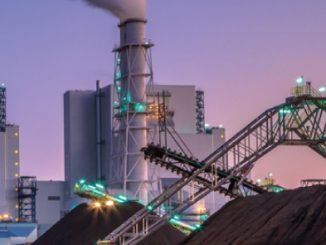The adoption of supercritical and ultra-supercritical technologies has gained significant momentum in the Indian market due to their ability to significantly enhance the overall operational efficiency of power plants and contribute to emission reduction. These advanced technologies, compared to conventional subcritical units, exhibit higher effectiveness, lower coal consumption, quicker start-up times, increased operational flexibility, and reduced CO2 emissions. A total capacity of 63,170 MW (91 supercritical units) and 1,320 MW (two ultra supercritical units) respectively have been commissioned as of March 13, 2023. Notably, the shift to supercritical and ultra-supercritical technology has led to an 8 per cent reduction in emission intensity, an 8 per cent increase in efficiency, and 2 per cent of power savings per unit.
In addition to emission reduction efforts, thermal power plants (TPPs), originally designed for baseload operation, now face the need to operate at partial loads to accommodate the fluctuating generation from renewable energy sources. Consequently, there is a growing demand for digital solutions that enhance the performance of boiler, turbine and generator (BTG) equipment. These solutions aim to facilitate flexible operation at lower loads without compromising safety, performance and reliability.
Supercritical, ultra-supercritical and advanced ultra-supercritical
The generation efficiency of coal-fired stations depends on steam parameters, whereby higher steam parameters result in higher efficiency. It is with this objective that the steam parameters have been constantly raised from 60 kg per cm2 for 50 MW units to 170 kg per cm2 for 500 MW units. Supercritical technology entails the use of steam pressure beyond the critical point of water/steam, which is about 225 kg per cm2 with various combinations of temperature and pressure. This has been made possible largely through developments in materials technology, improving the ability to withstand higher temperatures and pressures in the boiler.
The implementation of supercritical technology in power plants provides several advantages, particularly in terms of environmental impact. One of the key benefits is a significant reduction in emissions for each kWh of electricity generated. With a 1 per cent increase in efficiency, there is a corresponding reduction of 2-3 per cent in CO2 emissions. Moreover, the adoption of supercritical technology proves to be the most economical approach for enhancing efficiency. The associated fuel cost savings make it an attractive option for power generation, aligning economic benefits with environmental responsibility. The technology also contributes to reduced boiler sizes per MW, optimising space utilisation and infrastructure requirements. Additionally, the reduction in start-up time enhances operational efficiency, enabling a quicker response to changing power demands.
Ultra-supercritical parameters, with a pressure of 250-300 kg per cm2 and main steam/reheat steam temperatures of 600/610 °Celsius, are also being adopted. Modern power plants prefer a variable pressure operation, or sliding pressure operation, due to its enhanced efficiency during part-load operation. The concern over losses associated with constant pressure operation at low loads is a key motivator for this preference among utilities. Vertical tube supercritical boilers, offering the capability of variable turbine pressure operation, provide thermodynamic advantages associated with variable pressure. This approach yields turbine efficiency benefits by saving power in boiler feed pumps, particularly in achieving true variable pressure operation.
Advanced ultra-supercritical (AUSC) power plants operate with steam temperatures up to 1,400 °Fahrenheit and pressures of 5,000 psi, resulting in a highly efficient power generation process. Estimated plant efficiency increases can be as much as 30 per cent compared to sub-critical power plants. Research and development of advanced materials are necessary to lead to full-scale demonstration and implementation. A consortium between Bharat Heavy Electricals Limited (BHEL), Indira Gandhi Centre for Atomic Research and NTPC was formed for the development of AUSC technology for TPPs. The nickel-based Alloy 617M has been selected by the AUSC consortium. The alloy is industrially available and the AUSC consortium has already expressed confidence in indigenous development of the alloy.
However, lack of experimental data on performance of Alloy 617M rotors hinders effective usage of this alloy in the Indian AUSC power plant. BHEL, in association with the Indira Gandhi Centre for Atomic Research and NTPC, is developing AUSC technology under the aegis of the National Mission on Clean Coal Technology. The technology aims to achieve an efficiency of 45-46 per cent as against 38 per cent efficiency in subcritical units and 41-42 per cent in supercritical units. AUSC technology has the potential to replace old and more polluting sets of more than 50 GW (TPPs that will be at least 30 years old by 2030) with the highest efficiency and lowest emission TPPs.
CFB
In circulating fluidised bed (CFB) technology, higher flue gas velocity and expanded bed entrainment enable a broad range of fuels. Efficient mixing and relatively low combustion temperatures contribute to low emissions of carbon monoxide, hydrocarbons and nitric oxides, with separated bed material recycled for sustained combustion. CFBC boiler technology has inherent benefits such as fuel flexibility while meeting emission norms and better operational flexibility at part loads vis-à-vis conventional coal-based technologies. Further, CFBC boilers have lower SOX and NOX emissions, eliminating the need for additional emission control equipment/ systems. Significantly, this technology also allows BHEL to provide biomass co-fired CFBC boilers.
In December 2022, BHEL entered into a long-term technology licence agreement (TLA) with Sumitomo SHI FW, Finland (SFW) for the design, engineering, manufacturing, erection, commissioning and sale of subcritical as well as supercritical circulating fluidised bed combustion boilers in India and in overseas territories except select countries. The Technology License Agreement with SFW will strengthen BHEL’s comprehensive capabilities to cater to power plant requirements in compliance with existing emission norms and contribute to the government’s Make in India initiative.
Other technologies
BHEL is developing coal gasification technology suitable for high ash Indian coal and has commissioned an indigenously designed 0.25 tpd coal-to-methanol pilot plant using a 1.2 tpd fluidised bed gasifier plant at Hyderabad. BHEL also plans to work with Coal India Limited and NLC India Limited to develop more coal gasification-based plants.
Integrated gasification combined cycle is another clean power generation technology that combines modern coal gasification technology with both gas turbine and steam turbine power generation. The technology has the potential to significantly improve the efficiency and emissions of coal power plants. It integrates a coal gasifier, a gas clean-up system and a gas turbine in a combined cycle mode where coal is gasified with either oxygen or air. The resulting synthesised gas (or syngas), consisting primarily of hydrogen and carbon monoxide, is cooled, cleaned and fired in a gas turbine.
With regard to coating technology, laser-based clad coating technology (LCCT) for boiler protection in TPPs is being used to extend component lifespan two to three times compared to existing methods. Crucial for supercritical and ultra-supercritical plants, LCCT addresses accelerated wear and corrosion in high-temperature environments, reducing frequent replacements, minimising downtime and improving overall efficiency. This groundbreaking technology not only ensures robust TPP performance but also holds promise for diverse engineering applications in extreme conditions, offering a durable and reliable coating solution.
Digitalisation
The digitalistion of BTG operations in power plants offers multiple benefits, such as emissions reduction, enhanced efficiency, optimised operations and maintenance costs, and improved reliability and performance during flexible operations. Digital tools enable constant monitoring of boiler temperature and pressure, managing emissions and improving overall efficiency. Real-time network monitoring and reporting, coupled with custom dashboards and business intelligence tools, facilitate data-driven decision-making for power generators. Advanced digital solutions such as digital twins, industrial internet of things, artificial intelligence, and machine learning are actively being deployed.
Digital applications play a crucial role in maintaining reliable and efficient TPP operations, especially with the increasing share of renewable energy. They help address challenges in flexible plant operation, optimising load factors, and reducing heat rates and auxiliary consumption. Temperature optimisers and adaptive controllers assist in achieving maximum steam temperature without violating material limits.
Digital solutions also contribute to emission control, enabling real-time monitoring to meet stringent environmental norms. Detection and plugging of boiler leakages, heat rate recording for steam turbines, and soot blowing optimisation are additional applications of digitalisation in power plants, enhancing overall operational efficiency and environmental performance. Further, digital twin optimises power plant efficiency by creating digital models, utilising both thermodynamic (TDM) and machine learning (MLM) approaches. TDM relies on thermodynamic equations with data input, following a traditional conservation of mass and energy approach. In contrast, MLM utilises training data, automatically identifying relevant inputs from operational data and eliminating systemic errors for a comprehensive model of power plant behaviour.
Conclusion
In conclusion, the Indian power sector is poised for advancements with 38 ultra-supercritical and supercritical units totalling 27,180 MW currently under construction. Notably, 14 of these units, amounting to 9,940 MW, have adopted ultra-supercritical technology, indicating a shift towards enhanced efficiency. Anticipated improvements in coal-based generation efficiency during 2022-27, driven by these advanced units, underline the sector’s commitment to progress. Recognising thermal power generation as the cornerstone of India’s power landscape, the adoption of clean coal technologies, particularly ultra-supercritical and supercritical, becomes imperative. The deployment of higher capacity units (660-800 MW) not only accelerates capacity expansion but also contributes positively to the environment by reducing CO2 and SOx emissions per unit of electricity generated.



